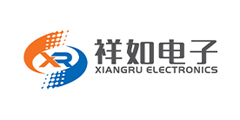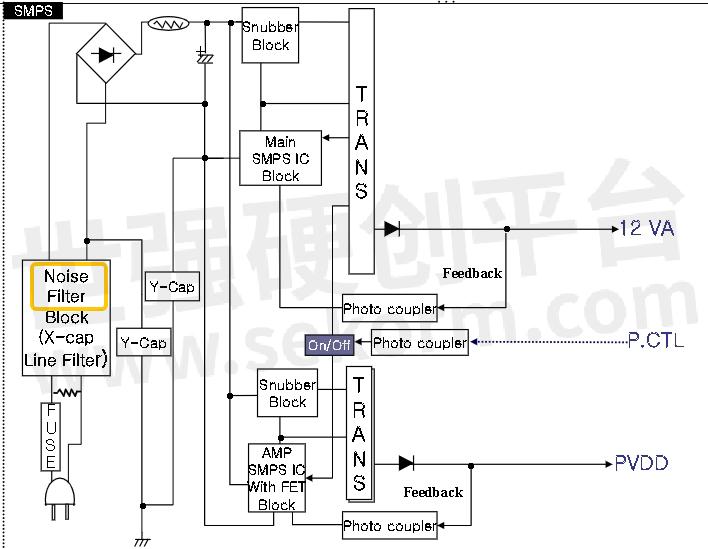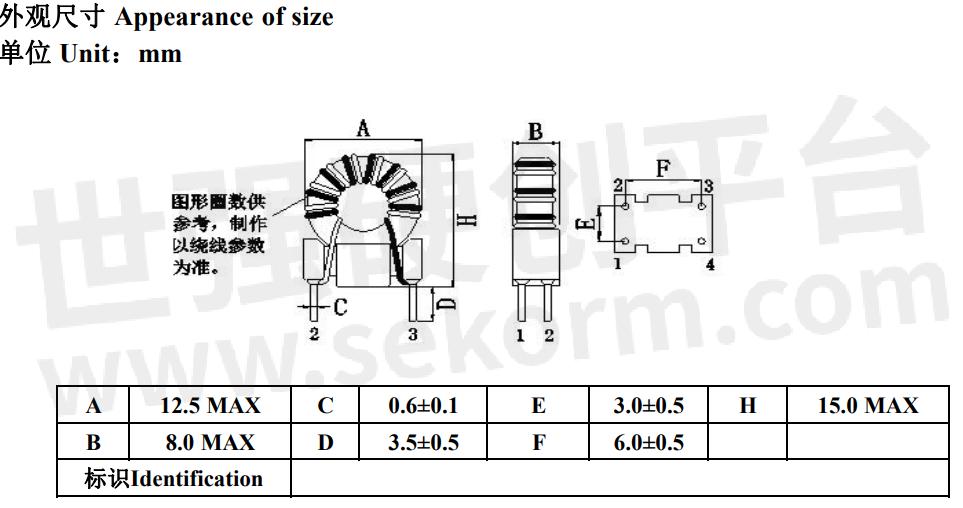The Xiangru Electronics XRT953B-351M Common Mode Toroidal Inductor Provides Excellent EMC Performance for Charging Station Products

With the increasing popularity of the new energy industry, the development of new energy electric vehicles in China has been rapid. Charging stations play an important role in this, and common mode toroidal inductors are widely used in charging station (OBC) products due to their important characteristic of suppressing common mode signal interference.

Block diagram of the switching power supply
common mode toroidal inductors are mainly used in the power supply of charging stations (high-voltage mains products). In power supply filters, toroidal inductors are used to filter out high-frequency noise from the power supply and improve its stability. Additionally, the common mode inductors selected for power supply products are usually larger in size. The XRT953B-351M common mode toroidal inductor from XIANGRU ELECTRONICS is very suitable for use in such circuits. It has a relatively large size (12.5mm * 8mm) and is wound with ferrite, but its flat structure allows it to maintain performance while occupying less space.

In power supply products such as charging stations, different requirements are placed on various components, and the application advantages of common mode toroidal inductors in charging stations include but are not limited to the following points:
Excellent EMC performance
Charging stations have relatively high requirements for electromagnetic interference. The product must not emit energy that interferes with other devices, and the radiation from other devices must not interfere with its function. Using the XRT953B-351M common mode toroidal inductor from Xiangru Electronics can provide effective EMI (electromagnetic interference) suppression for magnetic device product solutions.
Circuit protection
The safety and stability of charging stations are of great concern, and common mode inductors can effectively protect the circuit of the charging station from damage caused by overload current by blocking the current when necessary, greatly extending the service life of the charging station.
Filtering and voltage stabilization
An important indicator of charging stations is that the output voltage must be stable; otherwise, it can cause damage to the charged equipment. In circuit design, common mode inductors, in parallel with capacitors, can effectively achieve filtering and voltage stabilization, providing stable voltage and current output, and preventing sudden changes in voltage and current during the charging process, ensuring that the charging station can operate stably under various working conditions.
Meeting specific requirements
The safety performance of charging stations is a significant concern for new energy electric vehicles. The XRT953B-351M common mode toroidal inductor from Xiangru Electronics can meet specific requirements during manufacturing, such as ensuring that the wires wound on the coil core are insulated from each other to prevent inter-turn breakdown and short circuits under transient overvoltage conditions, thereby improving the safety performance of the charging station during use.
In summary, the application of common mode toroidal inductors in charging stations ensures the safety, stability, and efficient operation of the charging stations through their unique circuit protection, filtering, and voltage stabilization functions. These characteristics make common mode inductors play an important role in power electronic devices such as charging stations, effectively improving the performance and reliability of the equipment.
- +1 Like
- Add to Favorites
Recommend
- Integrally Formed Inductor Recommended for TWS Earphones: XRTC252012S2R2MBCA from Xiangru Electronics Has a Low DC Resistance of Only 65mΩ
- Xiangru Electronics XRSQ1010-10mH-H High Performance SQ Flexible Flat Cable Common Mode Choke, Helping the Miniaturization Design of Power Products
- Xiangru Electronics Introduced the Unshielded Inductor XRCD32-220K, with a Size of Only 3.5*3.0*2.1mm, Which Helps the Small and Lightweight Design of Products
- Xiangru Electronics Introduced an Integrated Inductor XR0630-4R7M, with a Maximum Dc Resistance of Only 42mω and a High Saturation Current of 7A
- XRTC252012S2R2MBCA Integrated Inductor Introduced by Xiangru Electronics Has a DC Resistance as Low as 55mΩ, Realizing Low Loss
- Design of Ultrasonic Drive Circuit for Xiangru Electronic Patch Transformer with Limited Assistance Space is Only 9*7*6.7mm in Size
- Comprehensive Guide to Capacitor Detection and Selection
- What Is A Common Mode Choke?
This document is provided by Sekorm Platform for VIP exclusive service. The copyright is owned by Sekorm. Without authorization, any medias, websites or individual are not allowed to reprint. When authorizing the reprint, the link of www.sekorm.com must be indicated.





























































































































































































































































































































































































































































































































































































































































































































































































































































































